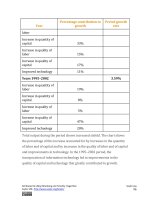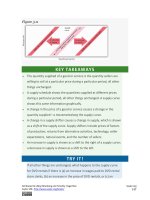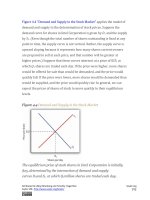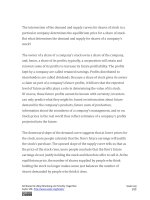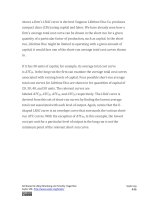Authors libby rittenberg 786
Bạn đang xem bản rút gọn của tài liệu. Xem và tải ngay bản đầy đủ của tài liệu tại đây (291.54 KB, 1 trang )
That rather rosy forecast was set aside after September 11, 2001. Terrorist
attacks on the United States and later on several other countries led to
sharp and sustained increases in federal spending for wars in Afghanistan
and Iraq, as well as expenditures for Homeland Security. The
administration of George W. Bush proposed, and Congress approved, a tax
cut. The combination of increased spending on the abovementioned items
and others, as well as tax cuts, produced substantial deficits.
The evidence presented in Figure 15.1 "Government Expenditures and
Revenues as a Percentage of GDP" does not fully capture the rise in
demand for public sector services. In addition to governments that spend
more, people in the United States have clearly chosen governments that do
more. The scope of regulatory activity conducted by governments at all
levels, for example, has risen sharply in the last several decades.
Regulations designed to prevent discrimination, to protect consumers, and
to protect the environment are all part of the response to a rising demand
for public services, as are federal programs in health care and education.
Figure 15.2 "Government Revenue Sources and Expenditures:
2007" summarizes the main revenue sources and types of expenditures for
the U.S. federal government and for the European Union. In the United
States, most revenues came from personal income taxes and from payroll
taxes. Most expenditures were for transfer payments to individuals.
Federal purchases were primarily for national defense; the “other
purchases” category includes things such as spending for transportation
projects and for the space program. Interest payments on the national debt
and grants by the federal government to state and local governments were
the other major expenditures. The situation in the European Union differs
Attributed to Libby Rittenberg and Timothy Tregarthen
Saylor URL: />
Saylor.org
786
